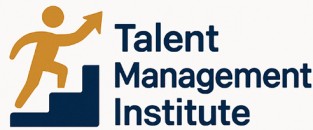
Understanding the Importance of Career Development
The Power of Career Development in the Corporate World
In today's rapidly changing business landscape, the significance of career development within an organization cannot be overstated. Companies are recognizing the power career growth has in fostering employee engagement and retention. Effective employee development not only attracts high-quality talent but also cultivates a robust internal pipeline of future leaders.
Career development programs provide structured opportunities for employees to enhance their skills and achieve career goals. Organizations that invest in these programs create an environment where learning is prioritized, ensuring that employees have access to training development and growth opportunities. This commitment lays a foundation for continuous professional growth and long-term career progression.
Employees benefit from a clear development plan that aligns with both personal aspirations and organizational needs. Whether through mentorship, structured training, or cross-functional experiences, the focus on career paths helps staff navigate their career trajectory confidently. Moreover, leaders play a crucial role in providing resources and support that align with the organization's developmental goals. Leadership involvement ensures that career development initiatives are integrated and impactful.
Understanding the importance of employee career development helps companies adapt and evolve their strategies to meet changing business demands. By aligning employee training initiatives with organizational goals, businesses create sustainable growth environments, leading to a more engaged and skilled workforce. A well-structured development plan, tailored to individual and organizational needs, maximizes opportunities for both current roles and future challenges.
Assessing Organizational Needs and Employee Aspirations
Aligning Company Needs with Employee Aspirations
To craft a successful career development program, understanding the intersection between organizational needs and employee aspirations is vital. Companies must assess how development plans can simultaneously fulfill their strategic objectives and nurture the career goals of their workforce. Organizations should begin by identifying the skills and competencies essential for long-term success. This involves examining industry trends, assessing upcoming opportunities, and understanding the leadership pipeline required to achieve future growth. Once these factors are established, businesses can align them with employee development goals. Engagement with employees plays a crucial role in this process. Gathering feedback and insights about their professional aspirations and current development needs helps companies tailor growth opportunities effectively. Incorporating regular surveys or feedback sessions into the development plan allows leaders to gain a deeper understanding of employees' career progression visions. Providing transparent career paths is another essential step. Clear communication of potential growth opportunities not only bolsters employee engagement but also ensures that professionals are aware of the diverse paths available within the organization. This transparency helps employees align their career development goals with the broader organizational objectives. By assessing both organizational needs and employee aspirations, companies can devise a development plan that not only promotes individual professional growth but also supports the company’s strategic ambitions. Such a balanced approach solidifies a culture of mutual support and ensures the sustainability of both employee growth and business success.Designing a Structured Career Development Framework
Key Components of a Comprehensive Career Development Framework
Designing a structured career development framework is a pivotal step in fostering employee growth within an organization. A well-crafted framework not only caters to individual aspirations but also aligns with the broader strategic goals of the company. Here’s a breakdown of how to construct such a framework effectively:- Identify Core Competencies and Skills:
- Start by identifying key skills and competencies that align with the organization’s objectives.
- Involve leaders to define the attributes valued in employees which support the long-term goals.
- Clear Career Paths and Progression:
- Create clear career paths to guide employees on potential trajectories within the company.
- Outline progression steps and the requisite skills and experience needed for each stage. This not only aids in employee engagement but also supports clarity in career goals.
- Diverse Learning Resources and Opportunities:
- Offer a range of training development programs, including workshops, online courses, and seminars, aimed at enhancing specific competencies.
- Provide cross-functional learning opportunities to broaden employee skills beyond their current roles.
- Mentorship and Peer Support Systems:
- Establish mentorship programs where experienced employees help guide career development for newer team members.
- Encourage peer support systems for ongoing development and shared learning experiences.
- Individualized Development Plans:
- Develop personalized development plans in consultation with employees to tailor career development paths based on their unique aspirations and strengths.
- Regularly review these plans to ensure they remain relevant and adjust as necessary to reflect any changes in career goals.
- Feedback and Performance Review Integration:
- Integrate career development metrics into performance reviews to provide feedback and identify areas of improvement.
- Use feedback to adapt training and professional development opportunities, ensuring they meet both employee and company needs.
Implementing Effective Training and Mentorship Programs
Building a Robust Training and Mentorship Foundation
Creating a robust framework for training and mentorship is crucial to bolster any corporation's career development programs. A well-structured system guarantees significant growth opportunities for employees, promoting both skill enhancement and professional development. Outlined below are key components to consider:- Identifying Training Needs and Opportunities: Understanding the specific skill gaps and growth aspirations within your organization can help in tailoring training programs that resonate with both organizational goals and individual career paths.
- Developing Tailored Training Programs: Customized training programs cater to the unique needs of your employees. This organizational effort not only supports career growth but also aims at improving overall employee engagement. Programs should be designed to enhance cross-functional skills and leadership capabilities.
- Establishing a Mentorship Culture: Pairing less experienced employees with seasoned leaders provides invaluable insights and guidance. A mentorship culture fosters a supportive environment, helps employees achieve their career goals, and paves the way for future leadership.
- Leveraging Internal and External Resources: Organizations should consider a mix of in-house expertise and external resources to enrich their training development programs. By diversifying learning sources, companies can offer a broader spectrum of learning opportunities.
- Continuous Learning Platforms: Providing employees with access to platforms that encourage continuous learning and skill development ensures a dynamic environment. These platforms should cater to long-term professional growth and facilitate career progression.
Measuring the Success of Career Development Initiatives
Evaluating the Outcomes of Professional Development
In the realm of career development, measuring success is not just an added advantage—it is essential for gauging both employee growth and organizational effectiveness. A well-structured career development program requires ongoing assessment to ensure alignment with the employee aspirations and the strategic goals of the company. By understanding the impact, companies can refine their approaches to better support career progression and development opportunities.
Tracking Employee Engagement and Progress
To truly evaluate the outcomes of professional growth initiatives, it's crucial to track employee engagement and progress systematically. This involves leveraging metrics that assess both quantitative and qualitative aspects of employee development. These metrics can include:
- Employee retention rates: Higher retention often indicates that employees feel supported in their professional growth and career paths.
- Promotion rates: An increase in promotions can signify successful leadership development and skill enhancements.
- Feedback surveys: Employee feedback can provide insights into how well the training development programs meet learning needs.
Aligning Program Objectives with Organizational Goals
Successful career development programs are not only about helping employees realize their potential; they also need to align with the organization’s strategic objectives. Companies should regularly revisit their career development plans to ensure they are meeting these broader goals. When program objectives align with company goals, the outcomes become part of the overall business success, fostering professional growth that benefits everyone involved.
Leveraging Leadership Support for Continuous Improvement
Gaining leadership support is vital for the continuous improvement of development programs. Leaders can offer insights into the long-term organizational vision, providing a framework within which employee career plans should evolve. Furthermore, leadership can help ensure that the resources and opportunities necessary for employee training are effectively utilized, enhancing both the quality and impact of development initiatives.
To sustain the momentum of growth and learning, it is important to treat evaluation as an ongoing process. By doing so, organizations not only help employees achieve their career goals but also harness these successes to propel the company forward, ensuring that both grow in a mutually beneficial manner.













